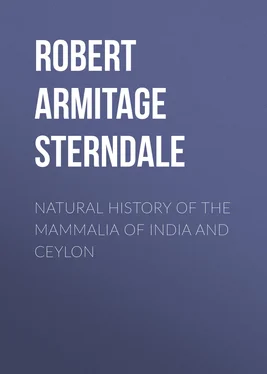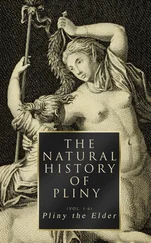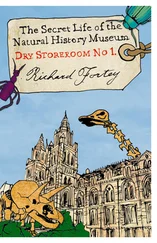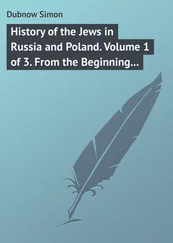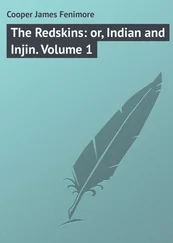Robert Armitage Sterndale - Natural History of the Mammalia of India and Ceylon
Здесь есть возможность читать онлайн «Robert Armitage Sterndale - Natural History of the Mammalia of India and Ceylon» — ознакомительный отрывок электронной книги совершенно бесплатно, а после прочтения отрывка купить полную версию. В некоторых случаях можно слушать аудио, скачать через торрент в формате fb2 и присутствует краткое содержание. Жанр: foreign_edu, Биология, на английском языке. Описание произведения, (предисловие) а так же отзывы посетителей доступны на портале библиотеки ЛибКат.
- Название:Natural History of the Mammalia of India and Ceylon
- Автор:
- Жанр:
- Год:неизвестен
- ISBN:нет данных
- Рейтинг книги:5 / 5. Голосов: 1
-
Избранное:Добавить в избранное
- Отзывы:
-
Ваша оценка:
- 100
- 1
- 2
- 3
- 4
- 5
Natural History of the Mammalia of India and Ceylon: краткое содержание, описание и аннотация
Предлагаем к чтению аннотацию, описание, краткое содержание или предисловие (зависит от того, что написал сам автор книги «Natural History of the Mammalia of India and Ceylon»). Если вы не нашли необходимую информацию о книге — напишите в комментариях, мы постараемся отыскать её.
Natural History of the Mammalia of India and Ceylon — читать онлайн ознакомительный отрывок
Ниже представлен текст книги, разбитый по страницам. Система сохранения места последней прочитанной страницы, позволяет с удобством читать онлайн бесплатно книгу «Natural History of the Mammalia of India and Ceylon», без необходимости каждый раз заново искать на чём Вы остановились. Поставьте закладку, и сможете в любой момент перейти на страницу, на которой закончили чтение.
Интервал:
Закладка:
Hutton also remarks that E. collaris , on hearing a noise, jerks the skin and quills of its neck completely over its head, leaving only the tip of the nose free.
HABITAT.—South India.
DESCRIPTION.—"Ears moderately large; form somewhat elongated; tail very short, concealed; feet and limbs very small; head and ears nude, sooty-coloured; belly very thinly clad with yellowish hairs; spines ringed dark brown and whitish, or whitish with a broad brown sub-terminal ring, tipped white."— Jerdon .
SIZE.—Head and body about 6 inches. Dr. Anderson considers this as identical with E. collaris .
HABITAT.—Central India, Goona, Ulwar, Agra, Kurrachee.
DESCRIPTION.—Similar to the above, but the tips of the spines are more broadly white, and the brown bands below not so dark; the ears are somewhat larger than micropus , and the feet narrower and not so long.
HABITAT.—North-west India.
DESCRIPTION.—The general colour is blackish-brown; the spines are narrowly tipped with black, succeeded by a narrowish yellow band; then a blackish-brown band, the rest of the spine being yellowish; the broad dark-brown band is so strongly developed as to give the animal its dark appearance when viewed from the side; some animals are, however, lighter than others. The feet are large; the fore-feet broad, somewhat truncated, with moderately long toes and powerful claws.
SIZE.—Head and body about 6¾ inches.
HABITAT.—Sind, where one specimen was obtained by Mr. W. T. Blanford, at Rohri.
DESCRIPTION.—Muzzle rather short, not much pointed; ears moderately large, but broader than long, and rounded at the tips; feet larger and broader than in the next species, with the first toe more largely developed than in the last. The spines meet in a point on the forehead, and there is no bare patch on the vertex. Each spine is broadly tipped with deep black, succeeded by a very broad yellow band, followed by a dusky brown base; fur deep brown; a few white hairs on chin and anterior angle of ear.
SIZE.—Head and body, 5·36 inches.
HABITAT.—Sind, Punjab frontier.
DESCRIPTION.—Muzzle moderately long and pointed; ears large, round at tip and broad at base; feet large, especially the fore-feet; claws strong. The spines begin on a line with the anterior margins of the ears; large nude area on the vertex; spines with two white and three black bands, beginning with a black band. When they are laid flat the animal looks black; but an erection the white shows and gives a variegated appearance.
SIZE.—Head and body about 7½ inches.
HABITAT.—Afghanistan.
More information is required about this species. Jerdon seems to think it may be the same as described by Pallas ( E. auritus ), which description I have before me now ('Zoographica Rosso Asiatica,' vol. i. page 138), but I am unable to say from comparison that the two are identical—the ears and the muzzle are longer than in the common hedgehog. This is the species which he noticed devouring blistering beetles with impunity. It has a very delicate fur of long silky white hairs, covering the head, breast and abdomen, "forming also along the sides a beautiful ornamental border" ( Horsfield , from a specimen brought from Mesopotamia by Commander Jones, I.N.)
The space to which I am obliged to limit myself will not allow of my describing at greater length; but to those of my readers who are interested in the Indian hedgehogs, I recommend the paper by Dr. J. Anderson in the 'Journal of the Asiatic Society of Bengal' for 1878, page 195, with excellently drawn plates of the heads, skulls and feet of the various species. There is one peculiarity which he notices regarding the skull of E. collaris (or, as he calls it, micropus ): the zygomatic arch is not continuous as in the other species, but is broken in the middle, the gap being caused by the absence of the malar or cheek-bone. In this respect it resembles, though Dr. Anderson does not notice it, the Centetidæ or Tanrecs of Madagascar.
Dr. Anderson's classification is very simple and good. He has two groups: the first, containing E. micropus and E. pictus , is distinguished by the second upper premolar simple, one-fanged, the feet club-shaped; soles tubercular . The second group, containing E. Grayi , E. Blanfordi and E. Jerdoni , has the second upper premolar compound, three-fanged, and the feet well developed and broad . The first group has also a division or bare area on the vertex; the second has not.
The following little animal has affinities to both Erinaceidæ and Tupaiidæ , and therefore it may appropriately be placed here. Dr. Anderson on the above ground has placed it in a separate family, otherwise it is generally classed with the Erinaceidæ . Its skull has the general form of the skull of Tupaia , but in its imperfect orbit, in the rudiment of a post-orbital process, and in the absence of any imperfections of the zygomatic arch and in the position of the lachrymal foramen it resembles the skull of Erinaceus . The teeth are 44 in number: Inc., 3—3/3—3; can., 1—1/1—1; premolars, 4—4/4—4; molars, 3—3/3—3, and partake of the character of both Tupaia and Erinaceus . The shank-bones being united and the rudimentary tail create an affinity to the latter, whilst its arboreal habits are those of the former.
Head elongate; ears round; feet arboreal, naked below; tail semi-nude; pelage not spiny.
HABITAT.—Burmah, Pegu, Ponsee in the Kakhyen hills.
Appears to be identical with the species from Borneo ( H. suillus ).
These interesting little animals were first accurately described about the year 1820, though, as I have before stated, it was noticed in the papers connected with Captain Cook's voyages, but was then supposed to be a squirrel. Sir T. Stamford Raffles writes: "This singular little animal was first observed tame in the house of a gentleman at Penang, and afterwards found wild at Singapore in the woods near Bencoolen, where it lives on the fruit of the kayogadis, &c." Another species, T. Javanica , had, however, been discovered in Java fourteen years before, but not published till 1821. They are sprightly little creatures, easily tamed, and, not being purely insectivorous, are not difficult to feed in captivity. Sir T. S. Raffles describes one that roamed freely all over the house, presenting himself regularly at meal-times for milk and fruit. Dr. Sal. Müller describes the other species ( T. Javanica ) as a confiding, simple little animal, always in motion, seeking its food at one time amongst dry leaves and moss on the ground, and again on the stems and branches of trees, poking its nose into every crevice. Its nest, he says, is formed of moss at some height from the ground, supported on clusters of orchideous plants. Dr. Cantor, in his 'Catalogue of the Mammalia of the Malayan Peninsula,' writes as follows: "In a state of nature it lives singly or in pairs, fiercely attacking intruders of its own species. When several are confined together they fight each other, or jointly attack and destroy the weakest. The natural food is mixed insectivorous and frugivorous. In confinement, individuals may be fed exclusively on either, though preference is evinced for insects; and eggs, fish and earth-worms are equally relished. A short, peculiar, tremulous, whistling sound, often heard by calls and answers in the Malayan jungle, marks their pleasurable emotions, as for instance on the appearance of food, while the contrary is expressed by shrill protracted cries. Their disposition is very restless, and their great agility enables them to perform the most extraordinary bounds in all directions, in which exercise they spend the day, till night sends them to sleep in their rudely-constructed lairs in the highest branches of trees. At times they will sit on their haunches, holding their food between their forelegs, and after feeding they smooth the head and face with both fore-paws, and lick the lips and palms. They are also fond of water, both to drink and to bathe in. The female usually produces one young."
Читать дальшеИнтервал:
Закладка:
Похожие книги на «Natural History of the Mammalia of India and Ceylon»
Представляем Вашему вниманию похожие книги на «Natural History of the Mammalia of India and Ceylon» списком для выбора. Мы отобрали схожую по названию и смыслу литературу в надежде предоставить читателям больше вариантов отыскать новые, интересные, ещё непрочитанные произведения.
Обсуждение, отзывы о книге «Natural History of the Mammalia of India and Ceylon» и просто собственные мнения читателей. Оставьте ваши комментарии, напишите, что Вы думаете о произведении, его смысле или главных героях. Укажите что конкретно понравилось, а что нет, и почему Вы так считаете.
